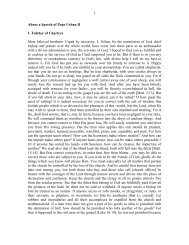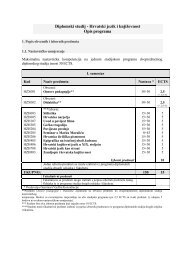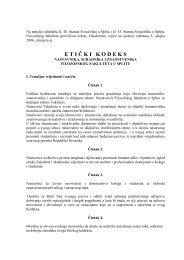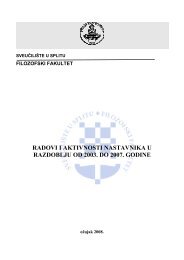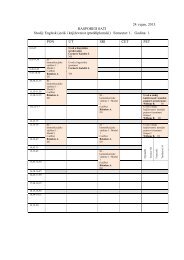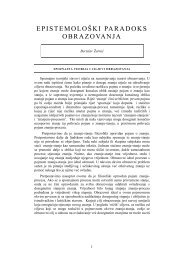Understanding Human Communication
Understanding Human Communication
Understanding Human Communication
You also want an ePaper? Increase the reach of your titles
YUMPU automatically turns print PDFs into web optimized ePapers that Google loves.
CREATIVITY KILLERS IN GROUP DISCUSSION<br />
Nothing squelches creativity like criticism. Although<br />
evaluating ideas is an important part of problem<br />
solving, judging suggestions too early can<br />
discourage members from sharing potentially valuable ideas.<br />
Here is a list of creativity-stopping statements that people<br />
should avoid making in the development phase of group work.<br />
“That’s ridiculous.”<br />
“It’ll never work.”<br />
“You’re wrong.”<br />
Brainstorm Probably the best-known strategy for encouraging creativity and<br />
avoiding the dangers just described is brainstorming. 14There are four important<br />
rules connected with this strategy:<br />
1. Criticism Is Forbidden. As we have already said, nothing will stop the flow<br />
of ideas more quickly than negative evaluation.<br />
2. ”Freewheeling” Is Encouraged. Sometimes even the most outlandish ideas<br />
prove workable, and even an impractical suggestion might trigger a workable<br />
idea.<br />
3. Quantity Is Sought. The more ideas generated, the better the chance of coming<br />
up with a good one.<br />
4. Combination and Improvement Are Desirable. Members are encouraged to<br />
“piggyback” by modifying ideas already suggested and to combine previous<br />
suggestions.<br />
Although brainstorming is a popular creativity booster, it isn’t a guaranteed<br />
strategy for developing novel and high-quality ideas. In some experiments, individuals<br />
working alone were able to come up with a greater number of highquality<br />
ideas than were small groups. 15<br />
Use the Nominal Group Technique Because people in groups often can’t resist the<br />
tendency to criticize one another’s ideas,the nominal group technique was developed<br />
to let members present ideas without being attacked but at the same time<br />
to retain the key elements of brainstorming. As the following steps show, the pattern<br />
involves alternating cycles of individual work followed by discussion.<br />
1. Each member works alone to develop a list of possible solutions.<br />
2. In round-robin fashion, each member in turn offers one item from his or her<br />
list.The item is listed on a chart visible to everyone. Other members may ask<br />
questions to clarify an idea, but no evaluation is allowed during this step.<br />
3. Each member privately ranks his or her choice of the ideas in order,from most<br />
preferable (five points) to least preferable (one point).The rankings are collected,<br />
and the top ideas are retained as the most promising solutions.<br />
4. A free discussion of the top ideas is held. At this point critical thinking (though<br />
not personal criticism) is encouraged.The group continues to discuss until a<br />
decision is reached, either by majority vote or consensus.<br />
CHAPTER 9 SOLVING PROBLEMS IN GROUPS 301<br />
“What a crazy idea!”<br />
“We tried it before, and it didn’t work.”<br />
“It’s too expensive.”<br />
“There’s no point in talking about it.”<br />
“It’s never been done like that.”<br />
“We could look like fools.”<br />
“It’s too big a job.”<br />
“We could never do that.”<br />
“It’s too risky.”<br />
“You don’t know what you’re talking about.”<br />
CULTURAL IDIOM<br />
freewheeling: unrestricted<br />
thinking<br />
piggyback: adding onto<br />
in round-robin fashion: go<br />
around in a circle, one after<br />
another



